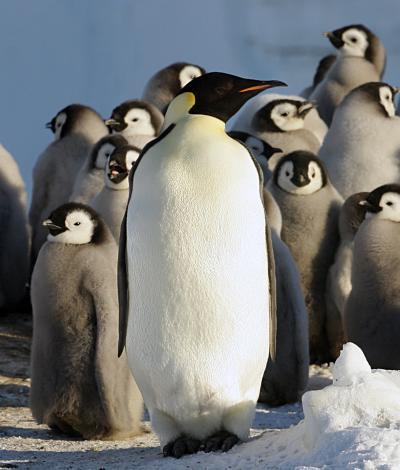Posted By News On June 25, 2014

This image shows the Eastern colony at the edge of the Mertz Glacier.
(Photo Credit: Robin Cristofari, CNRS/IPEV)
Field surveys and satellites complement each other when studying remote penguin populations, according to research published June 25 in the open access journal PLOS ONE by André Ancel from the CNRS at Strasbourg and colleagues.
Penguins residing on Antarctica's ice sheets must face moving, breaking, and shifting ice. Accurate monitoring of population trends is critical to understanding the ongoing rapid changes in Antarctic ecosystems. However, the remoteness and logistical complexity of operating in Antarctica, especially during winter, can make such an assessment difficult. Satellite imaging is being increasingly recognized as a valuable method for remote animal population monitoring, yet its accuracy and reliability are still to be fully evaluated. In this study, the authors report on several successive remote surveys in the coastal region of East Antarctica, both before and after sudden local changes. Additionally, they describe the first ground visit of an emperor penguin colony initially discovered by satellite.
Source: PLOS


















No comments:
Post a Comment